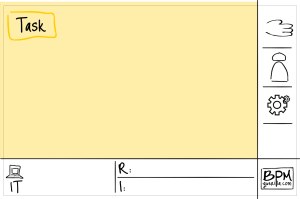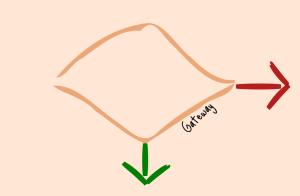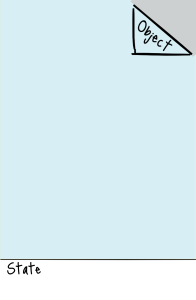Last week I explained how I manage to chair a process modeling workshop. Today I would like go into detail to the point of process modeling in workshops.
My goals for this are:
- easy to use and understand even for people which never thought about process modeling
- close to BPMN
- easy to transport
- visible for every participant of a workshop
I tried various things within the last years:
- Using modelings tools with a beamer (not really off-line)
- Using white boards and draw processes
- Using static foils (e.g. stattys.com)
- Using Post-It®s
- Using facilitation cards with
- magnets and white boards
- with pin and pin boards
- with tape and brown paper
In the end currently I prefer facilitation cards, because the are available in any company or easy to organize, available in many colors and big enough. But I struggled with the magnets, pins and tape. It often happens that after a few minutes of discussion right in the middle of the process some steps have to be added. It is really hard to take the cards of or shift the cards if they were attached to a wall. Or they drop because the pin is not long enough or the Post-It® do not stick well on dusty walls. Therefore i decided to switch into the horizontal.
Today I use tables.
All cards are arranged on the tables and the participants are staying around it. The cards can not drop, they are very easy to move and shift. Tables could be arrange to one very long row or a circle or or or. You have really enough space to work. The walls and brown papers are used for other stuff (like expectations, open topics, etc.).
Additionally after using facilitation cards fore a while I decided to design my own process cards, which are based on BPMN:
I printed those cards in postcard size on thick paper, they were really great. It is easy to mark necessary additional information, showing up the process flow and are more special than facilitation cards which has a positiv effect to the motivation of the participants.
You are interested into the template of the process cards (available as PDF) or you would like to have a small set of process cards for testing purposes. Please contact me: info@bpm-guerilla.com







